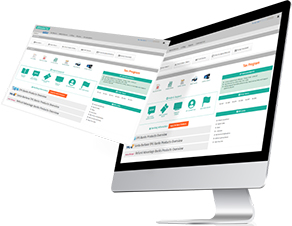The question every tax preparer hears is, “How long till I get my tax return?” Families have plans for that money to go on vacation, make household repairs, or use it as a downpayment for a new car. Students use it to fill in their meager budgets, furnish their apartments, and get another semester’s books and supplies. Most likely, they have already committed their refund and need some items paid.
As soon as they sign their return, they want money in hand. They expect you to have the answers, though you have little control over what happens after you submit the documents. The government works at its own pace. As their adviser, it’s up to you to prepare them for possible delays.
The Average Tax Return
While every household is different, the average personal income tax return can be deposited in the client’s bank account in as little as ten days if:
- None of their deductions need to be verified.
- They e-file their return with all necessary documents.
- They include bank information for direct deposit.
This is the scenario with the quickest turnaround. Not all household finances are simple, however.
The Problem
Taxpayers need to realize that tax return fraud is on the rise. There was $10 billion in tax fraud in 2021, and the IRS prosecuted 2,500 thieves and fraudsters. Identity thieves submit tax returns in their victims’ names and direct the payment into their own accounts. Once someone steals a tax return, it can take months for the victim to prove:
- A thief stole their tax return.
- The money rightfully belonged to them.
- Their own identity.
Only after the IRS is satisfied will they reissue the refund to the correct household.
Short delays now for the IRS to verify taxpayer information can save your clients long delays in getting their refund later.
The IRS also handles returns from taxpayers claiming deductions they don’t qualify for to get larger refunds or pay less taxes. Returns with excessive or unusual deductions will raise red flags.
Safety Measures
The IRS will want to double-check all returns that send up red flags. That’s why they include extra questions on the e-filing, like requesting your gross annual income from the previous year’s taxes, to verify who you are. Anyone who can’t definitively identify themselves must send in paper tax returns, which will bear more scrutiny.
The Solution
The safety measures may or may not satisfy your clients, depending on their financial situation. However, you can offer them solutions to the delayed refund using bank products for tax preparers. Here’s how.
Bank products for tax professionals have two major benefits:
1. Early Refunds
Banks can offer short-term loans with little to no interest in anticipation of the expected refund. These loans give taxpayers quick access to the funds. When the IRS releases the taxpayer’s return, the money first goes to the bank to pay off the loan, and the balance is sent to the client. The client is happy they got their return early, and you get some good public relations and client loyalty.
2. Refund-Paid Fees
The other benefit is your ability to collect your fees directly from the tax return. Not every household can afford a professional tax preparer but would gladly pay if they had the money rather than prepare their taxes alone. Instead of paying your fees out of pocket, the bank product allows the client to pay all fees out of the expected tax return. There is no hassle in trying to collect payments from the client and no payment schedules to deal with. You get your full fee as soon as the bank receives it from the IRS.
Bank products also provide a huge benefit to your office. You can advertise for new clients and gain a broader client base. Households that could not afford to pay fees upfront are suddenly part of your client pool. You can offer quicker turnarounds on tax refunds and no up-front fees. This gives your office a competitive advantage over offices that expect immediate payment.
Integrating Bank Products
The best professional tax preparation software should allow easy integration of bank products. By integrating bank products, information transfers seamlessly from product to product. There are fewer screens to open, fewer passwords to remember, fewer copy-and-paste data transfers, and fewer chances something will fall through the cracks.
While the IRS needs to get it right the first time to prevent fraud, it can be frustrating for clients to wait, especially if they submit a complicated return that needs multiple verification points. It’s never fun telling clients news they don’t want to hear. With bank products, however, you can offer your clients options rather than apologizing for slow turnarounds you can’t control. You become the hero and improve client retention and referral rates.
Video
Infographic
As a tax preparer, you often hear the question, “How long till I get my tax return?” Clients expect quick answers, but preparing them for potential delays is important. Learn more in this infographic.








